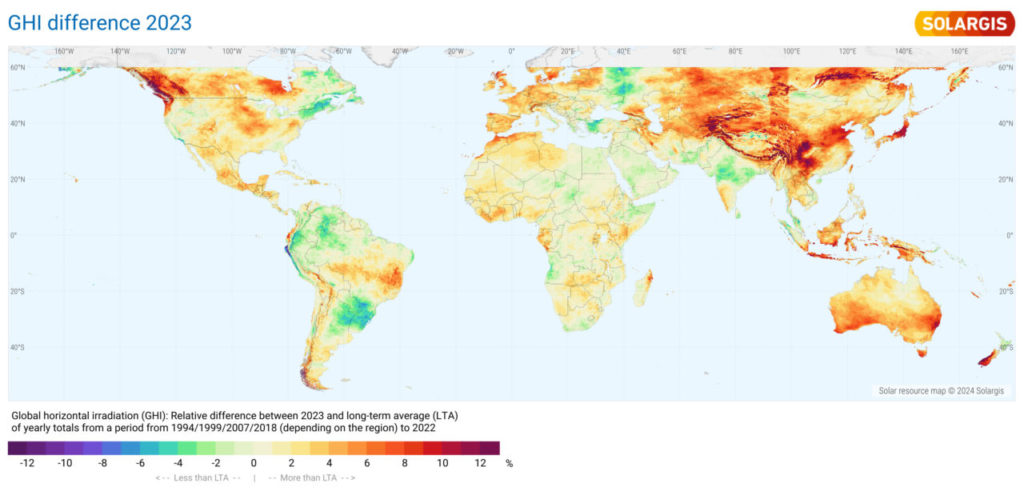Some regions benefit from high levels of solar radiation, particularly in Southeast Asia and Australia. Southeast Asia and Australia exceeded long-term average solar radiation by 10% and 2%, respectively, due to favorable weather and low cloud cover.
Europe also saw above-average solar radiation, particularly in the southern regions of the Nordic countries, where solar radiation levels were 1-7% above the long-term average in most parts of the continent. This is due to low cloud cover and rainfall, Solargis says.

In India, long-term solar radiation continues to decline over much of the country, mainly due to the prolonged monsoon season, which has reduced the availability of solar resources. While solar radiation in central India is 1-5% below the long-term average, southern India's solar radiation is 5% above the long-term average during the driest and sunniest months of June and August.
Mixed solar radiation has been recorded in America. Some areas of the United States benefited from an El Niño event, which saw more sunshine and less rain, while Central America saw above-average sunshine.
In South America, the La Niña event has affected some parts of the continent, especially southern Brazil, reducing the availability of solar energy.
"Until 2023, solar energy remains a beacon of hope in the face of an unprecedented climate crisis and global warming. Our analysis shows that solar radiation will remain stable or above normal in many regions, contributing to the growth of the industry. Competitiveness compared to other energy sources."
Although high solar radiation is observed in many parts of the world, extreme weather conditions can affect solar projects in the area. For example, solar project losses and project insurance have been affected by frequent and severe ice storms in the United States and Australia.
Rain-related losses averaged $58.4 million, renewable energy project underwriter Jcube Insurance reports.
To better prepare for extreme weather events, Solargis calls on solar industry stakeholders to address grid sustainability, solar financing in developing countries and supply chain capacity in 2024 and beyond.
PV Tech recently published an article explaining why solar insurance companies are narrowing business interruption and equipment damage claims.
Suri said. "There is a growing interest among stakeholders to closely monitor and analyze trends in solar resources. As we push the limits, stakeholders must improve their monitoring, analysis and optimization capabilities to address risks and the continued growth of solar in our global energy landscape."



